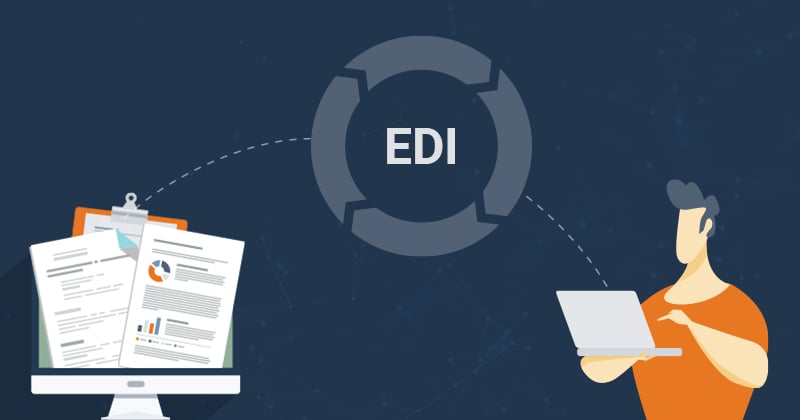In today’s fast-paced business environment, maximizing efficiency is crucial for any organization to stay competitive and profitable. Electronic data interchange integration is one solution that can help businesses streamline their operations and improve efficiency. This integration can save time, reduce errors, and improve communication by automating the exchange of business documents between trading partners.
However, implementing it is not always straightforward, and businesses must follow best practices to ensure a successful integration. If you need assistance with edi integration, check out integrationinc.com. This article will explore the best practices for businesses looking to maximize efficiency with EDI integration.
What is EDI Integration?

This system represents a computer-to-computer exchange of business documents in a standardized format between trading partners. EDI integration refers to automating the exchange of these documents between trading partners’ computer systems. That allows businesses to exchange information, such as purchase orders, invoices, and shipping notices, faster and more efficiently, without the need for manual data entry.
It can be achieved through various methods, such as direct, web-based, or a value-added network. The direct model involves a direct connection between the trading partners’ computer systems, while the web-based uses a web portal to exchange documents. The value-added network involves using a third-party network provider to exchange documents.
Main Benefits
Implementing this type of integration offers numerous benefits for businesses. One of the main advantages is increased efficiency, as it eliminates the need for manual data entry and reduces the risk of errors associated with paper-based systems. That can result in faster processing, reduced lead times, and improved customer satisfaction.
It can also help businesses save costs by reducing paper usage, manual labor, and the need for expensive courier services. Moreover, EDI integration can improve supply chain visibility, enabling businesses to track orders and shipments in real-time and respond quickly to any issues.
Furthermore, it can also improve compliance with industry standards and regulations, such as the Sarbanes-Oxley Act, HIPAA, and FDA regulations, by providing an auditable record of transactions. That can help businesses avoid costly penalties and legal issues associated with non-compliance.
Common Challenges and Solutions

Although EDI integration offers many benefits, there can be challenges associated with implementing it. One of the common challenges is the complexity of EDI standards and protocols, which can vary between trading partners. That can result in compatibility issues and errors during document exchange. To overcome this challenge, businesses should choose a solution that supports a wide range of standards and can handle different document formats.
Another challenge is ensuring the security and integrity of data exchanged through this system. That is especially important for sensitive data, such as financial information and personal data. To address this challenge, businesses should implement secure protocols, such as AS2 or SFTP, to encrypt data in transit and at rest.
When selecting a solution, businesses should consider cost, scalability, flexibility, and compatibility with existing systems. They should also evaluate the solution’s data mapping, document validation, and workflow automation capabilities.
Best Practices
To ensure a successful EDI integration, businesses should follow best practices such as:
- Clearly define the scope and goals of the integration project
- Choose the right EDI solution that meets the business requirements and supports the necessary standards
- Create a project plan that includes timelines, milestones, and roles and responsibilities
- Conduct testing and validation to ensure the system is working as expected
- Provide adequate training and support for users to ensure a smooth transition to the new system
Integrating EDI with ERP Systems

Integrating EDI with ERP systems can further enhance efficiency by automating the exchange of information between the front-end and back-end systems. This integration can improve order processing times, reduce errors, and improve visibility across the supply chain. Integrating EDI with an ERP system gives businesses real-time insights into inventory levels, production schedules, and order fulfillment.
To integrate these two systems, businesses can choose an ERP with built-in capabilities or use middleware to connect their existing systems with an EDI solution. The middleware bridges the two systems, translating data between different formats and ensuring seamless integration.
Managing Projects
Managing an EDI integration project involves creating a detailed project plan, monitoring progress, and communicating with stakeholders. It also involves addressing issues arising during the implementation process, such as data mapping errors or system compatibility issues. A project manager should be appointed to oversee the project, and regular meetings should be scheduled to discuss progress and address any concerns.
To ensure a successful project, businesses should involve all relevant stakeholders, including IT staff, trading partners, and end-users. That will help identify potential issues early on and ensure that everyone knows the project’s scope and goals.
Measuring the Success
Measuring the success of an EDI integration project involves tracking key performance indicators such as processing time, error rate, and cost savings. That can help businesses evaluate the new system’s effectiveness and identify improvement areas. In addition to tracking KPIs, businesses should gather end-user feedback to assess the system’s usability and identify any issues or areas for improvement.
Setting realistic goals and benchmarks for the project is important as communicating these to all stakeholders. That will help to ensure that everyone is aligned with the project’s objectives and that progress can be tracked effectively.
Future Trends
The future is expected to be driven by advancements in technology such as artificial intelligence, blockchain, and the internet of things. These technologies can further improve efficiency and visibility across the supply chain by automating processes and providing real-time insights into operations. For example, blockchain can create secure, decentralized ledgers of transactions, while AI can analyze data and identify patterns and anomalies.
The Bottom Line
By automating manual processes and streamlining communication with trading partners, businesses can improve efficiency, reduce errors, and increase visibility across the supply chain. From integration with ERP systems to managing integration projects and measuring success, there are many best practices businesses can follow to maximize the benefits of EDI. And with the continued advancement of technology, the future of EDI integration is promising, providing even more opportunities for businesses to improve their operations

